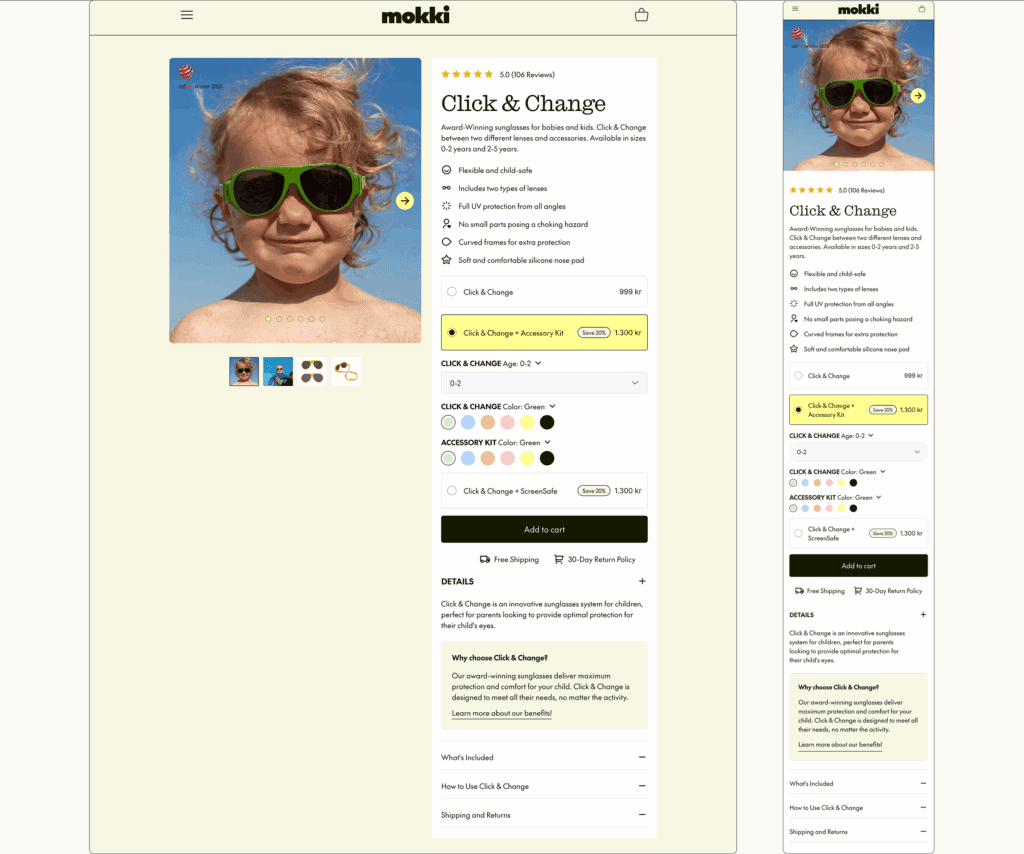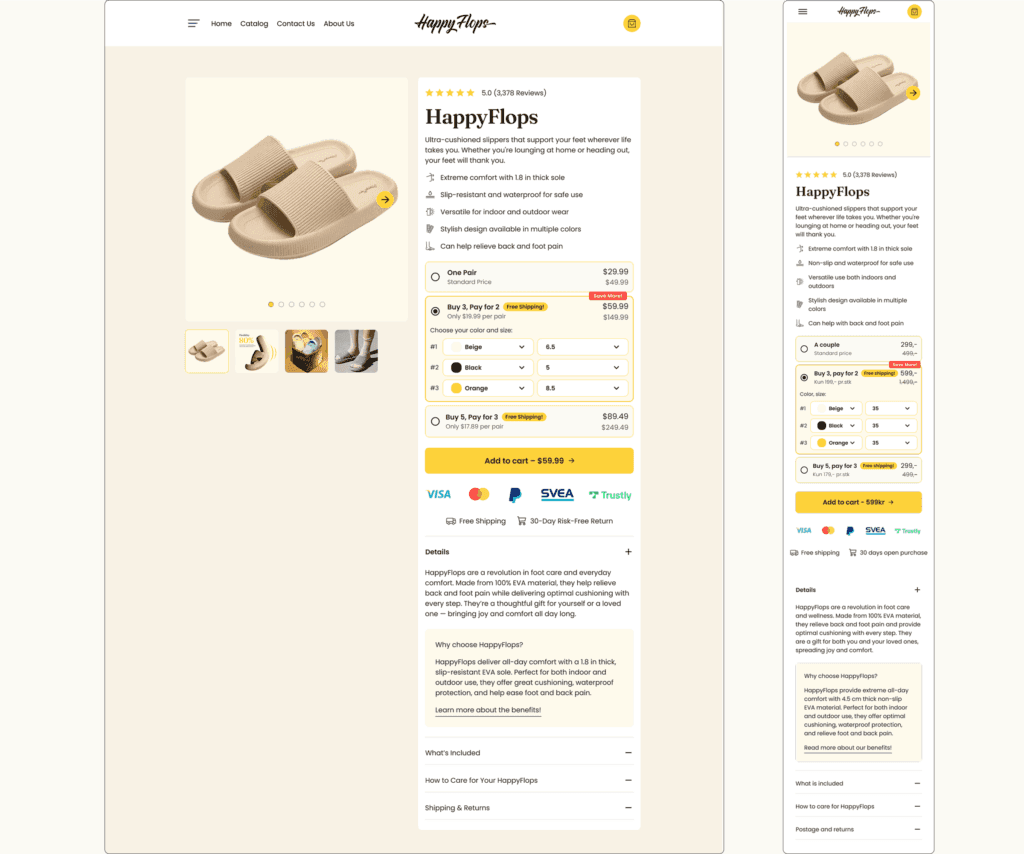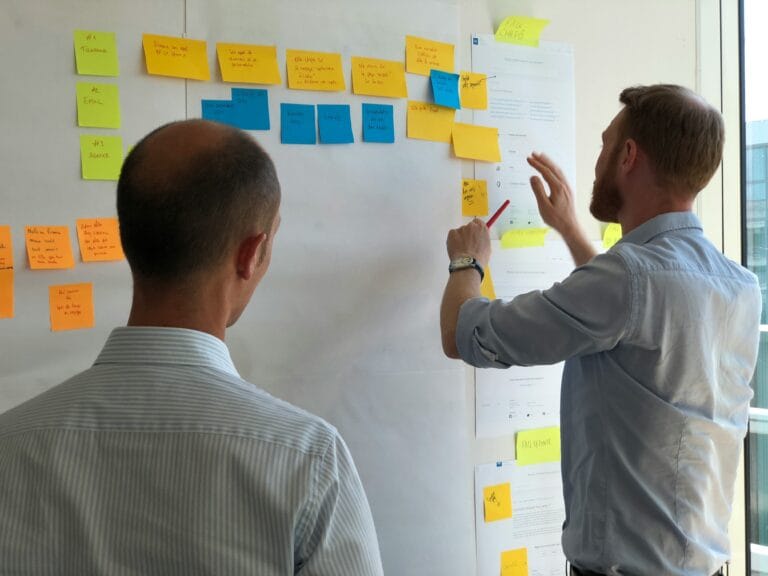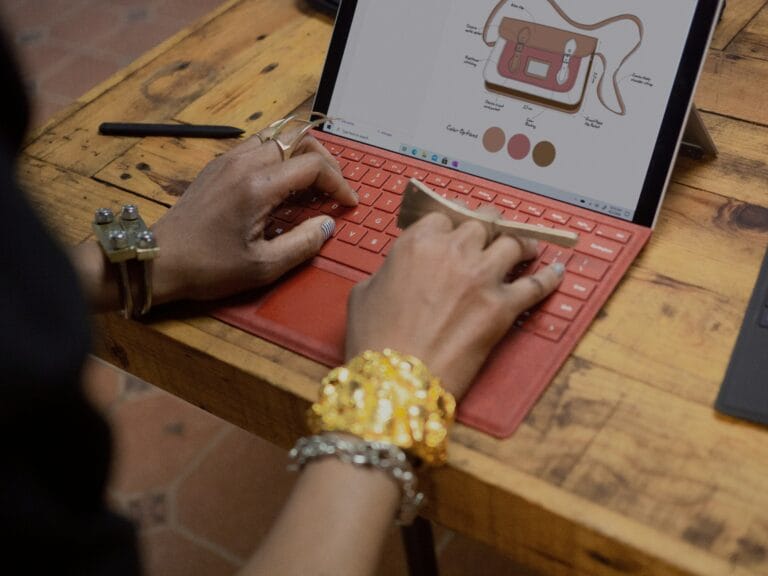You know what nobody really tells you about eCommerce success? It doesn’t hinge on that final “Buy Now” click. Most people picture conversions as a loud, triumphant moment when the sale rolls in. But real growth? It’s hiding in the quiet stuff,those little user actions that don’t grab headlines but move the needle all the same. If you’ve ever stared at Google Analytics late at night, hunting for answers about why carts get abandoned or why people bounce right before check out… you’re not alone. I’ve been there. Turns out, the real gold is in understanding microconversion, those small signals that show your customer’s journey is inching,sometimes crawling,toward the finish line.
Let’s get real: With so much competition, you can’t afford to just fixate on the big wins. If you want to grow, you have to zoom in on the tiny steps your customers are taking, the hesitations, and even the clicks that seem to go nowhere. Microconversions are pure insight if you know where to look. In this article, we’re diving into why these little moments matter so much, how you can spot them in your own user journey, and the practical ways eCommerce pros are using UX tweaks to turn every click, scroll, or signup into momentum for bigger conversions. This isn’t theory,it’s about finding real signals you can act on, so you actually see results the next time you open up your dashboard.
Introduction to Microconversions
Microconversions might sound like a fancy term, but they’re really just the small actions users take on your eCommerce site that hint at their interest or intent to buy. Imagine them as the breadcrumbs leading up to a purchase. These actions could be anything from signing up for a newsletter, adding an item to a cart, or even watching a product video. Each of these steps shows engagement, even if they don’t directly result in sales right away.
Now, why should you care about these tiny actions? In the eCommerce world, the big goal is always to make a sale. This is what we’d call a macro conversion. But here’s where microconversions come into play, they’re the steps that guide users towards those macro conversions. Think of them as the warm-up act before the main event.
You might be wondering, “Why focus on these smaller actions when the end goal is the sale?” Well, understanding microconversions gives you a clearer picture of how customers interact with your site. By tracking these little wins, you can see where potential buyers are getting stuck or dropping off. For instance, if users frequently view product pages but rarely add items to their cart, that’s a clue that something might be off with your product descriptions or pricing.
Focusing on microconversions can be a game-changer for your business. It allows you to refine user journeys and eliminate friction points, paving a smoother path to purchase. At Blikket, we’ve seen firsthand how tweaking these small steps can make a big difference. Take Rumi Cosmetiques, for instance, they doubled their conversion rate just by focusing on these incremental changes.
So, if you’re not already paying attention to microconversions, it’s time to start. They’re the key to understanding your customers better and boosting your sales in the long run. To dive deeper into how you can maximize these strategies, consider exploring our eCommerce secrets that boost sales with UX and CRO strategies.

The Importance of Microconversions in User Experience
Let’s dive into why microconversions matter so much for enhancing user experience. Think of them as the signposts on a road trip. They don’t get you to your final destination, but they show you’re on the right path. Each microconversion reflects a moment of user engagement, like signing up for a newsletter or adding a product to a wishlist. These actions can tell you a lot about what users are thinking and feeling as they interact with your site.
Here’s the scoop: microconversions are like gold mines for insights into user behavior. They help you see where users are getting excited or where they’re dropping off. For example, if a lot of folks are reading your product reviews but not adding items to their cart, there might be a disconnect between the interest generated and the final buying decision. This could mean it’s time to tweak your product descriptions or even your pricing strategy.
Now, you might think, “Why not just focus on the final sale?” Well, understanding these smaller steps is crucial because they help you spot and smooth out any rough patches in the customer journey. If you notice people are abandoning their carts, maybe it’s time to simplify the checkout process or offer a clearer return policy. By addressing these microconversion touchpoints, you can make the overall user experience much more seamless and satisfying.
Consider this: at Blikket, we’ve watched brands like Rumi Cosmetiques thrive by honing in on these details. They saw a significant boost in conversion rates by focusing on the small wins, like optimizing their ‘add to cart’ process. This isn’t just theory, real businesses have seen real results by understanding and improving microconversions.
In short, these small steps are stepping stones to big successes. They illuminate the path users take on your site and highlight where improvements can be made, ensuring smoother journeys and happier customers.
Identifying Key Microconversions in eCommerce
So, you’re trying to pinpoint which microconversions are most critical for your eCommerce business. It’s not always straightforward, but it’s essential for steering your marketing strategies in the right direction. Let’s break down some common microconversions that can signal user interest and intent.
First off, think about newsletter sign-ups. When someone subscribes to your newsletter, they’re opening the door for future interactions. It’s like they’ve given you a nod, saying, “I’m interested in what you have to offer.” These sign-ups are invaluable for nurturing leads and can lead to long-term engagement. I’ve seen businesses transform their conversion rates by simply optimizing their email capture strategies.
Next, consider product page views. When users are clicking on your product pages, it’s a strong indicator of interest. Are they spending a lot of time there? That suggests they’re seriously considering a purchase. If you notice high page views but low cart additions, it might mean your product descriptions or pricing need a tweak. A colleague of mine once revamped their entire product page layout, incorporating high-quality images and clearer CTAs, and saw a significant boost in conversions. Discover more about how high-quality visuals can impact your conversion rates.
Then, there’s the big one: adding items to the cart. This is a clear microconversion that shows the user is almost ready to buy. But if they abandon the cart, it’s a signal to dive into why. Is there a friction point in your checkout process? Maybe there’s a surprise cost like shipping that’s putting them off. Analyzing these patterns can help you smooth out the bumps in the road to purchase. Consider optimizing your checkout process by following some checkout UX best practices.
Another often overlooked microconversion is the use of on-site search or filters. When users refine product listings by price or category, they’re narrowing down their preferences. It’s a telltale sign they’re moving closer to a decision. If your search functionality isn’t up to par, you might be missing out on guiding these users to the right products.
I’ve also found that interactions with product reviews or FAQs are worth watching. When users engage with this content, they’re doing their homework before making a decision. If they’re reading reviews but not buying, consider showcasing more trust signals or adjusting your review system to be more user-friendly.
Finally, don’t forget about account creation or adding items to wishlists. These actions show a long-term purchase consideration mindset. They also provide a great opportunity for retargeting strategies.
By focusing on these microconversions, you can create a more efficient and user-friendly journey for your customers. At Blikket, we’ve worked with brands like Mokki and HappyFlops, helping them optimize these small interactions to boost their overall conversion rates significantly. It’s about creating a seamless path from interest to purchase, and these microconversions are the stepping stones.

By identifying and optimizing these key microconversions, you’re not just looking at numbers; you’re enhancing the entire user experience. It’s a strategy that turns potential interest into actual sales, and in the competitive world of eCommerce, that’s priceless.
Optimizing UX Design to Boost Microconversions
Let’s cut to the chase. If you’re looking to boost microconversions on your eCommerce site, it’s all about refining the user experience. Think of UX design as the path that guides your visitors from curiosity to conversion. Here are some tactics that I’ve seen work wonders.
First, let’s talk about site navigation. Ever been on a site where you feel lost? It’s frustrating, right? Keep your navigation simple and intuitive. Use clear labels and a logical structure. This helps users find what they’re looking for without hassle. An easy-to-navigate site can keep users engaged, increasing the chances they’ll take those small, meaningful actions like signing up for newsletters or adding items to their cart.
Now, let’s move to landing pages. These are often where first impressions are made, so they need to be spot-on. Make sure your landing pages are not just visually appealing but also fast and to the point. High-quality images, concise copy, and engaging CTAs (calls to action) can make a significant difference. Ensure that these elements load quickly to avoid losing impatient visitors. A/B testing can be your best friend here. Try different headlines, images, or button colors to see what resonates best with your audience. It’s amazing what a small tweak can do for your conversion rates.
Personalization is another key player in boosting microconversions. When you tailor the user experience based on browsing history or previous interactions, it feels like a personalized shopping experience. For instance, showing personalized product recommendations or offering discounts based on past purchases can nudge users toward those microconversions that lead to sales.
Lastly, don’t underestimate the power of A/B testing. By experimenting with different elements on your site, you can gather data on what works and what doesn’t. Maybe you find that a green “Add to Cart” button outperforms a red one, or that a testimonial section increases trust and leads to more newsletter sign-ups. Use these insights to continuously refine your UX.
At Blikket, we’ve seen firsthand how these strategies can transform user experience and drive microconversions. Just like Rumi Cosmetiques, who saw their conversion rate double by focusing on UX design tweaks, you can turn small steps into significant successes.
Case Studies and Success Stories
Let’s talk about some real-world success stories where companies have harnessed the power of microconversions to give their conversion rates a noticeable boost. These examples might just spark some ideas for your own strategies.
First up, let’s look at a fashion retailer called TinaR. They faced a challenge familiar to many: high traffic but low conversion rates. By focusing on microconversions, they turned things around. Their key tactic? They introduced an exit-intent popup that reminded users to use size filters, which helped them find the right product fit. The result was impressive, a 57.87% increase in conversion rates. It’s a great reminder of how a simple tweak can address a specific user need and lead to big gains.
Another company, Mokki, also saw significant improvements. By zeroing in on microconversions, like optimizing their upselling techniques and refining their product positioning, they achieved a 397% increase in conversion rates and boosted total sales by 348% with the help of Blikket. Mokki’s focus on these small but crucial steps helped them guide customers smoothly from interest to purchase, demonstrating the power of strategic enhancements in the customer journey.

Another example for Blikket’s client is HappyFlops, a footwear brand that revamped its product pages. By enhancing microconversions like product page interactions and upselling opportunities, they increased their revenue by 565% and achieved a 12.5% conversion rate. It’s a clear example of how focusing on the details can transform user experience and drive sales. Learn more about how to improve your Conversion Rate Optimization.

Now, you might wonder what these companies did differently. It’s all about paying attention to those micro steps that users take, like signing up for newsletters, adding items to wishlists, or using search filters. By optimizing these actions, they created smoother pathways to purchase. Whether it’s through personalizing user journeys or simplifying navigation, each small change can make a significant impact.
So, if you’re looking for ways to enhance your own eCommerce strategy, consider diving into microconversions. Sometimes, the smallest actions can lead to the biggest outcomes. And as these case studies show, a little focus on the micro can indeed lead to major success.
We’ve journeyed through a lot of ground on microconversions, and now it’s time to pull it all together. These small steps, often overlooked, are the unsung heroes in the eCommerce world. They’re like the little nudges that guide a customer down the path to making a purchase. Whether it’s a newsletter sign-up or an ‘add to cart’ action, each microconversion plays a crucial role in shaping the customer’s journey.
Think of microconversions as the warm-up acts before the main performance. They build trust and reduce hesitation, creating a smooth path for customers to follow. The more you understand these micro steps, the better you can tailor the experience to meet your customer’s needs. It’s like having a map that highlights all the spots where your customers are most likely to take action.
Now, you might be wondering, “Why should I focus on these tiny actions?” The answer is simple: they lead to bigger results. By optimizing these touchpoints, you can identify where customers drop off and make the necessary tweaks to keep them engaged. At Blikket, we’ve seen how focusing on microconversions has helped brands like Rumi Cosmetiques double their conversion rates. It’s all about turning those micro steps into major successes.

If you’re not already diving into your microconversion data, it’s time to start. Look for patterns, test new strategies, and don’t be afraid to make small changes. Even a tiny adjustment can lead to a significant increase in your conversion rates. Remember, in the competitive eCommerce arena, those who master the art of microconversions often find themselves ahead of the pack.
So, take a closer look at your customer journey and see where you can make a difference. These micro steps might just be the key to unlocking long-term success for your eCommerce business.
Here’s the bottom line: Microconversions are your secret weapon
It’s easy to chase those big, flashy wins, but if you’re hungry for steady growth, don’t overlook what’s happening in-between. Microconversions,those tiny signals like sign-ups, wishlists, or even a click on your FAQ,tell you a ton about where your customers are headed and what might be slowing them down. When you start paying attention to these moments, you stop guessing and start making real improvements to your store’s experience.
- Watch how people interact with your site (track those small actions, not just sales)
- Smooth out the spots where folks wobble or hesitate
- Test out different versions of your CTAs, product pages, and navigation
- Think of every microconversion as a trust-building moment that warms customers up for the real deal
If you want more sales, start by making the journey less bumpy. Use your data, get curious about the small stuff, and keep tweaking until those microconversions start adding up. What’s one microconversion you’ll focus on first? I’d love to hear what’s worked (or totally bombed) for you,drop your stories or questions below!










